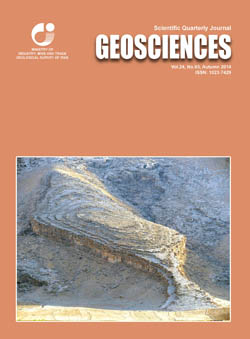Document Type : Original Research Paper
Authors
1 Associate Professor, Department of Geology, Faculty of Basic Sciences, Tarbiat Modares University, Tehran, Iran
2 Assistant Professor, Faculty of Geology, College of Sciences, University of Tehran, Tehran, Iran
Abstract
Structural analysis of folds in the Kharapeh area clears tow co-axial folding stages in the Cretaceous metamorphic rocks, in this part of the Sanandaj-Sirjan zone. First stage folds are tight to isoclinal recumbent folds that were co-axially refolded by second stage upright open to close folds. Normal faults, mafic dykes and abundant quartz veins oriented sub-parallel to the axial surface of the kharapeh antiform implying that the extensions were synchronous with folding perpendicular to the fold axis, during second stage folding process in the area. This is well concordant with tangential longitudinal strain folding mechanism for the second stage folding. By this folding mechanism, tension was produced at the outer arc of the Kharapeh anticline and quarts veins were generated by compression in the core area and filled in the tension fractures that were mostly produced in the fold hinge area during the folding process. In fractures where it was accompanied with shearing, some clasts from wall rocks were engaged in the fault zone breccias. The field observations reveal that the fractures were produced synchronous with the second folding stage in the Kharapeh anticline and filled by the gold bearing quartz veins.
Keywords

